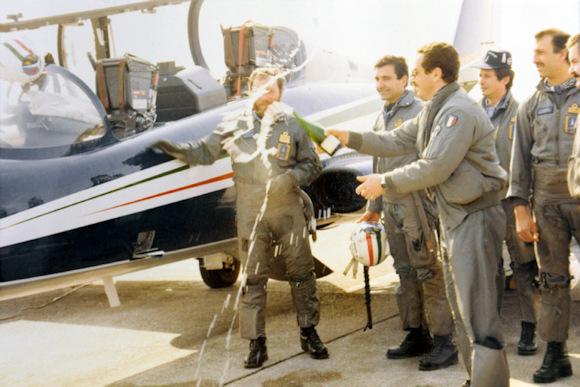6 January 1982. It is not a mistake, the date is correct, that of theEpiphany.
An Epiphany with a great gift, that of 39 years ago, for the history of Italian aviation: it brought the first Aermacchi MB-339 to the National Aerobatic Team, the “Frecce Tricolori”!
At the beginning many turned up their noses, because the differences with the FIAT G91 (following photo) were so many and all apparently unfavorable for the new jet aircraft: much less powerful and fast, without that fighter plane image that the G91 had, with that pointed muzzle, swept wings and braking parachutes on landing. We also add that at the time the crossings (especially in training, in Rivolto) really took place 2 centimeters above the blades of grass in the roar of fighter aircraft engines of yesteryear and all this did not give space to other feelings than were excitement and national pride.
The "339", with its almost rectangular trapezoidal wing and its appearance of a "flying dolphin" was (and is) decidedly more peaceful, and also the news about its clear flight qualities and the "order and cleanliness" of its instrumentation made for some time to think that the heroic act of the performance of the Frecce Tricolori (truly heroic as it was performed with the G91) was now relegated to memory and a “low emotional impact undertaking”.
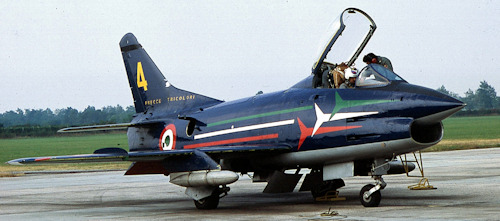
Developed an aerobatic program tailored to the characteristics of what was a flight training aircraft and no longer a fighter-bomber, installed a smoke system integrated in the fuselage (and not applied to its exterior, as in the initial intentions of the designer), replaced the wing tanks at the ends with other sub-wings for acrobatic and visibility needs and embellished everything with a modern and captivating livery, everyone had to change their mind when they saw it at work.
Indeed, the "morphological" characteristics of the new airplane allow maneuvers unthinkable for a jet aircraft, such as the "Scampanata" or the "LomÇevak".
For 39 years, the 10 MB-339s of the "Frecce Tricolori" have flown, together with our flag, the demonstration of a leadership unchallenged in the ability to design and produce the best military flight training aircraft of the 2nd and 3rd educational periods.
 The “339” made it possible to represent Italy in that way all over the world, even where the G91 could not have arrived, as in America. The Aerobatic Team, in fact, not only has the role of ambassador of patriotism and representation, but also that of exhibit the design and industrial capabilities of our nation.
The “339” made it possible to represent Italy in that way all over the world, even where the G91 could not have arrived, as in America. The Aerobatic Team, in fact, not only has the role of ambassador of patriotism and representation, but also that of exhibit the design and industrial capabilities of our nation.
For those who do not know what the 2nd and 3rd instructional period of the training of military pilots destined for the "fighter" line means, and understand how these will be updated in the immediate future, it may be useful to make a quick digression.
The "Phase I" of the training of military pilots has been carried out so far in Latina at the 70th wing and has the sole purpose of identifying which pilots have the potential to become then military pilots. To do this, the cadet officers are trained "ab initio" and become them airplane pilots, on single-engine propeller aircraft SF-260, born as SIAI-Marchetti, merged together with Aermacchi and Alenia in Leonardo SpA
The "Phase II" is the basic training common to all pilots and at the end of this the division into 4 different lines takes place: line aerotactic, line transport, line helicopters and finally remotely piloted aircraft. This training takes place at the 61st Lecce-Galatina flock on MB-339A.
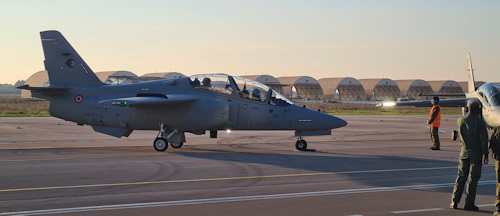 For each of these phases there is a “phase 3” which is the specific advanced training according to the sector of employment of the pilot. For those destined for the aerotactic line it still takes place at the 61st flock, but on MB-339CD and at the end of this, obtained the military pilot there is “Phase 4” which is pre-operational training, the exclusive prerogative of the T-346A.
For each of these phases there is a “phase 3” which is the specific advanced training according to the sector of employment of the pilot. For those destined for the aerotactic line it still takes place at the 61st flock, but on MB-339CD and at the end of this, obtained the military pilot there is “Phase 4” which is pre-operational training, the exclusive prerogative of the T-346A.
Just two weeks ago the first two examples of the basic training aircraft T-345A (M-345 High Efficiency Trainer - HET developed and produced by Leonardo Spa) landed at the military airport of Lecce-Galatina (photo). destined to gradually replace the entire fleet of MB-339s of the “Arma Azzurra”.
The new trainer, of totally Italian design and production, will be used by the 61st wing for phases II and III of the training process of the Air Force and foreign air forces that train their pilots at the international flight school. Thanks to the “family feeling” that unites it with the T-346A and its support infrastructures, it is so well integrated into this modular training method that it allows to reduce the types of aircraft used from three to two.
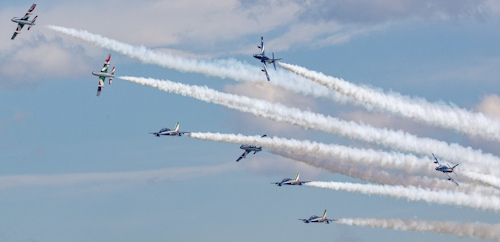 This training program will integrate the 61st flock with the future International Flight Training School (IFTS), whose works were inaugurated on December 16th at the Decimomannu air base (Ca).
This training program will integrate the 61st flock with the future International Flight Training School (IFTS), whose works were inaugurated on December 16th at the Decimomannu air base (Ca).
The introduction of the T-345A (or M-345 HET if you prefer), was a partial rediscovery of a competitor of the Aermacchi MB-339, the SIAI-Marchetti S211, but it has been extensively updated especially in terms of engine and avionics. In particular, the latter makes use of very advanced technologies already in use on the T-346A that allow a less problematic and very efficient transition to the advanced stage of training "Advanced / Lead-In to Fighter Training" (phase IV), to the total advantage of the quality of the training with significant cost reduction that justifies the name of M-345-HET (High Efficiency Trainer)
All this happens when all the training aircraft currently in use in Western countries (AlphaJet, SAAB 105, CASA 101, BaeHawk, and MB-339) are close to leaving the scene, outlining the scenario of an incredible opportunity for engineering. and the domestic industry.
A resource like the MB-339, although wonderful, is now too expensive, not as integrated in the training process of military pilots and with now reduced availability of spare parts.

And for his employment as an ambassador of Italian pride with the Tricolor Arrows?
Well, given the premise that the technical requirements of the different use compared to the use as a trainer involves less need for adaptation than what is necessary for the MB-339, I could repeat what I have already written above in the transition from FIAT G91 to MB- 339, adding that the Patroulla Aguila (Spain) has never disfigured, despite having a less performing vehicle than our MB-339.
To the more technical I leave a couple of graphs of the turn diagram of the MB-339 and the M-345, to all the others I give an appointment at the first airshow of our National Aerobatic Team on the M-345.
That will be the best explanation!
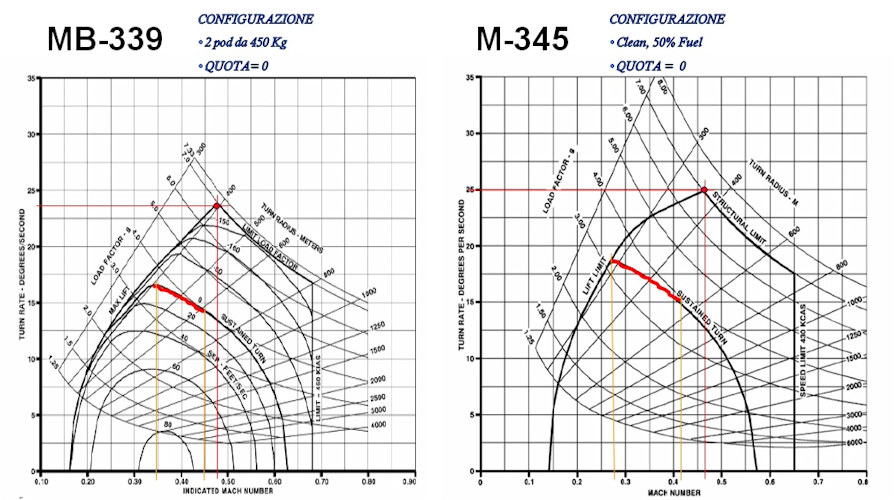
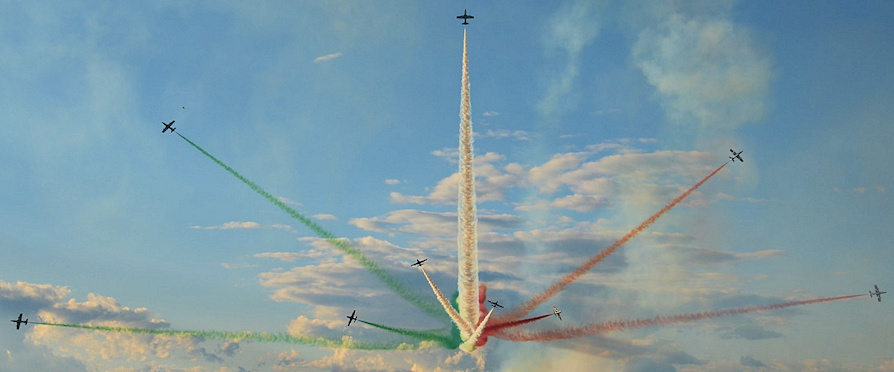
Photo: Aeronautica Militare
Diagrams: Alenia-Aermacchi (Online Defense processing)

